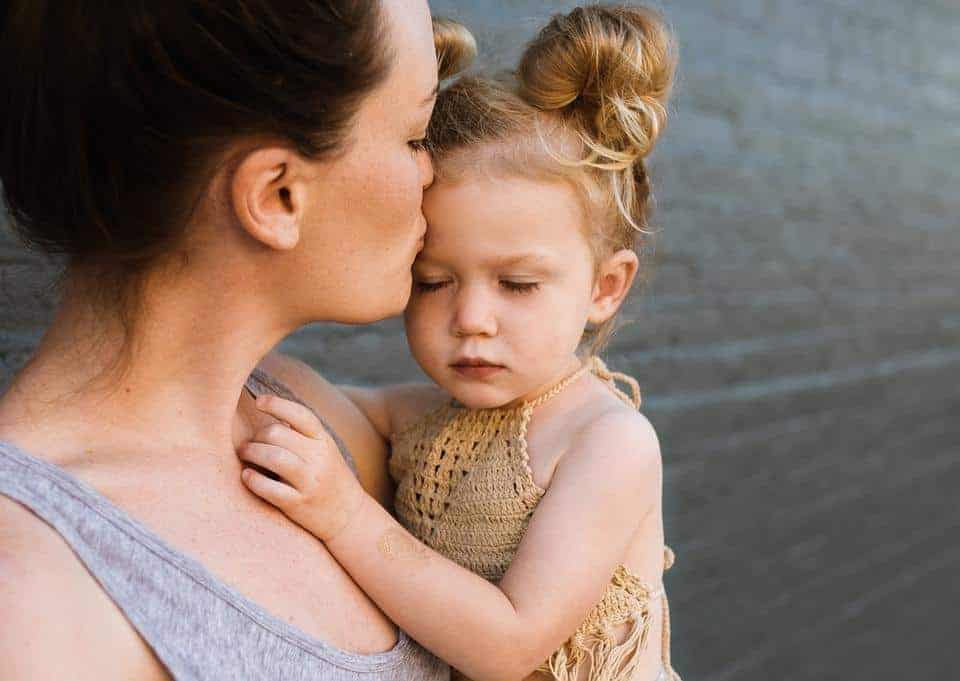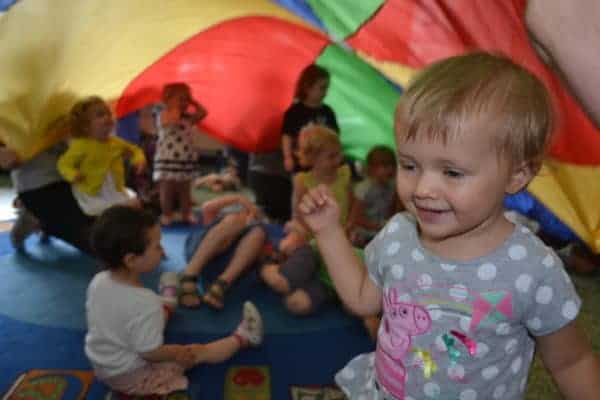The terrible twos! If only there was a way to banish those sometimes embarrassingly public screaming rages for good. Well, it looks like practising mindfulness might be the answer to this issue, like it is for so many other problems. Schools in the UK have been practicing mindfulness since 2016 and its link to exam success in schools as well as in universities is astonishing. Now the trend is moving towards very young children and toddlers.
The ever-increasing popularity of mindfulness is due to the fact that it has been proven to help so many areas. As if reducing stress wasn’t enough, mindfulness has been shown to improve people’s well-being and enjoyment of life, and even physical health issues like heart disease, blood pressure and gastrointestinal difficulties have all been ameliorated by a regular mindfulness practice. For mental health problems, mindfulness has been linked to tackling ‘depression, substance abuse, eating disorders, couples’ conflicts, anxiety disorders, and obsessive-compulsive disorder,’ according to Help Guide.
But how exactly do you teach mindfulness to toddlers, and why would you want to? We already know that practicing mindfulness improves the mental health of adults and teens alike, so the ‘why’ is easy. Improving your toddlers’ state of mind is likely to improve their overall well-being, making them less prone to having an enormous hissy fit. But what are the benefits of encouraging your toddler to practice mindfulness, other than simply soothing the savage beast within?

Why is Mindfulness Beneficial for Toddlers?
Practising mindfulness can help children learn to focus, manage stress, regulate emotions and develop a positive outlook – all valuable life skills that will go with them as they progress through each and every one of life’s most pivotal key moments. For toddlers, the rewards are the same as those gained by older children, with the addition of it having a huge ‘impact on cognition when the brain is in its earliest stages of development’, meaning that practising mindfulness, combined with some other parenting approaches, can help make your baby smarter.
If you practice mindfulness already, or if you have some experience with working with children or counselling, then you’ll know the huge influence that your own state of mind has on the children (and even adults) around you. Some people are surprised to learn how extremely perceptive children are, but it’s true. Children pick up on a lot more than you might think and they certainly feed off your mood. This means that when you’re feeling at your lowest, most stressed or most exhausted, they can tell you’re not fully buying into the conversation that you are having with them or with engaging with the activity you might be doing together. By working on your own mindfulness and fully engaging with every activity that you are doing, no matter how simple, your children will know how committed you are to them. Developing your own mindfulness practice will also help you in terms of your connection with your child. If you can develop your own ability to focus then you might be able to avoid arguments altogether as you’ll know a lot more about your child’s wants or needs, enabling you to pre-empt them. Your child will also know that you are paying full attention to them when you are together.
Developing your own mindfulness practice can also help you to recognise your stress triggers, making it easier for you to spot when it is time for you to get some help from a friend or family member in order to give you some valuable me-time. What’s more, explaining your feelings of frustration, sadness or anger when they crop up to your child shows them that it is normal to feel that way at times and teaches them a healthy way to process their emotions.
Tackling issues like temper tantrums is always going to be difficult, but using your own mindfulness techniques in those moments can help both of you. Whilst it can be tricky to remain calm when inside you feel like you want to shout and scream back just as loudly, being able to step back and soothe your child by communicating mindfully about the emotions they’re feeling can help get you back on an even footing again. The most important thing to remember in moments like that, is that your both learning together. You are learning about the specific needs of that individual child just as much as that child is learning about what life is like in the twenty-first century.
How To Begin
If you already have a regular mindfulness practice, then encouraging your child to participate is a great way to get them on the path to living a well-balanced, satisfied life.
The Give it a Name Game
When you are next due to practice a mindfulness technique yourself, ask your child if they want to get involved. You could start by simply getting them to draw their attention to the way that their body feels, their emotions and the thoughts in their head and then naming them. This is a great introductory technique that helps you to understand the issues that might be worrying your child as well as teaching them about emotions and setting them on the path to recognising their own trigger points in years to come.
Listen to a Mindfulness Audiobook together
In this highly technological age, there is no shortage of audiobooks that you can rely on to get your toddler into mindfulness. Psychology Today recommends the following mindfulness audio guides:
Kira Willey: Mindful Moments for Kids CD (30 simple, quick ways to help children de-stress, calm down and focus), and her other fantastic musical yoga for kids CDs.
Carla Naumburg: Ready, Set, Breathe: Practicing Mindfulness with Your Children for Fewer Meltdowns and a More Peaceful Family
Eline Snel: Sitting Still Like a Frog: Mindfulness Exercises for Kids
Amy Saltzman: Still Quiet Place CDs for Children and for Teens
Thich Nhat Hanh: Planting Seeds: Practicing Mindfulness with Children
There are plenty more out there that a swift YouTube or Google search can identify for you. Remember to give them a go before playing them to your toddler to check that they contain suitable material.
Enjoy Physical Contact
Combining mindful breathing with physical contact like hugging or cuddling is another easy way to subtly introduce mindfulness to your toddler. The next time you are enjoying a cuddle, turn off the TV and embrace the calm of a quiet room. Ask them to relax and take a few deep breaths. While they breathe in count to three slowly and do the same as they breathe out. Ask them to close their eyes and concentrate on how they feel. When you think they’ve had enough and are looking relaxed and peaceful, ask them how they felt and what they experienced.

This is a simple and effective technique that can be easily introduced into any naptime or bedtime routine and can be relied on to calm down other more fraught moments once they are used to it.
Mindful Meals
Bringing awareness to what you are eating is a recommended mindfulness technique for adults in terms of gaining control of your eating habits as well as for its ability to bring your mind to the ‘present moment, while calmly acknowledging and accepting your feelings, thoughts, and bodily sensations’. It’s another great technique that you might already be using that you can adopt and adapt to encourage your toddler to participate in a more mindful lifestyle. You can have lots of fun with this technique by preparing a wide variety of foods with as many different textures and flavours as possible, such as carrot sticks, raspberries, orange slices, mango, raisins, lentil crisps, nuts, etc. You could even try some unusual foods that they’ve never had before like physalis.

To do this properly, you need a quiet moment, so turn all distractions off first. Encourage them to really look at the food before they eat it, get them to smell it and examine it and then when they are ready to place the food in their mouth. Once there, ask them to take their time with it and to really savour the moment. Ask questions like: What does it feel like in your mouth? What does it taste like? Is it sweet? Does it taste the way you thought it would? What’s it’s texture? Is it soft or crunchy? What does it sound like? Get them to chew thoroughly (each mouthful should be between 20 and 40 chews). Afterwards, ask them if they liked the food and why. By getting them to bring all their senses to the moment, so that they’re aware of the food’s colour, scent, texture and even sound, you will be helping your toddler to develop their cognitive ability, in terms of focus as well as vocabulary, broadening their taste and working towards improving their mental health.
Well-being Walks
Something as simple as a walk around the park to feed the ducks can be adapted into a mindfulness technique, bringing you both some vital fresh air and exercise as well as encouraging your toddler to ensure that every moment of the day has their full attention. Ask them to bring their attention to what they see as you start your walk. Once you’ve discussed as much as possible, then up the ante a little. Ask them what they can hear, then what they can smell. You might want to do these last two things sat holding hands (or with your little one on your lap) on a park bench for a couple of minutes to really devote your full attention to it. Doing this teaches your toddler to truly be in a moment and not to be thinking about what will be happening later, whether that’s in a few days’ time or later that night.
Mindful Chores
This one brings huge benefits to both of you! The next time you’re doing some household chores, ask your toddler to help you. Turn it into a mindfulness technique by bringing the same approach that you use in Mindful Mealtimes and Well-being Walks to the activity. For example, if you’re going to clean the house, then give your toddler a child-safe activity like dusting to do whilst you hoover for example. Not only does this save you the job, you’re also working on your mindfulness practice together. Ask your helper what they can see, what the dust looks like when it moves, what the dust smells like, what it looks like in the sun’s light, etc.
Mindful Movements
Like the Well-being Walk technique, Mindful Movements is a fabulous activity that combines exercise with honing your mindfulness skills. There are all sorts of mindful movement videos available online for free. Just remember to watch everything you intend to play to your child(ren) all the way through first to make sure it is suitable for them. Ask them to look at everything that their body is capable of and to recognise how wonderful it is that our bodies work the way that they do, as well as asking them to pay attention to how their bodies feel as they bend and stretch, to listen to their breath as they do it and observe how their breath changes. Doing some simple stretches and movements together before naptime is a great way to get your toddler to slowly start unwinding and brings their attention to what is going on around them as well as inside them.
Seize Every Opportunity that Presents itself
Don’t panic if you find yourself struggling to do all the wonderful mindful techniques that you had promised to do with your little one. You can apply these techniques to all sorts of scenarios, meaning that you don’t have to find time that you simply don’t have. The next time you find yourself waiting for any reason, whether that’s to see the dentist or to be served at the supermarket or to cross the road, take the time to stop for a few moments to absorb and see what each of your senses tells you is happening around you and within you. Then discuss what you noticed.
Be a Mindfulness Role Model
Show your little one how it’s done by leading the way if you can see that they are struggling to answer your questions. Describe how you feel and how your mindfulness practice makes you feel to show them that there are many different options available. Always make sure that they know that there’s no such thing as a wrong answer for these moments too.
Blissful Breathing
If your toddler struggles to switch off at nap times, or worse, at bedtime, then working on some breathing techniques together is a great way to relax them enough to get them to sleep, whether that’s just for a short power nap or through the night. Ask them to notice their breath by placing one hand on their chest so that they recognise the way that their chest lifts and falls as their breath goes in and out. Then try asking them to put their fingers under their nose so that they can feel the warmth and dampness of their breath. When they are concentrating on what they can feel, this is a good time to let them know that ‘when they are angry, it can be calming to focus on what our breathing actually feels like’. That way when things next go pear-shaped, you should be able to successfully de-escalate the situation by asking them to slow down and concentrate on their breathing.
Soothing Sensations
If you have a child who loves being touched, for example, having their hair brushed, their back stroked or their hand tickled, then these moments can also be used to bring your little one’s attention to the present. Ask them how they feel in those moments, what does it feel like, do they feel differently now compared to before you started brushing their hair/stroking their back, etc.? Get them to concentrate on the sensations that this activity produces. Does it make you sleepy? Does it make you feel very heavy? Or, do you feel as light as a feather?
Explain Your Own Emotions
Doing this from a very early age is a great way to set your toddler on the path to living a mindful life. Whenever you are struggling, explain what you feel and why to them, so that they are able to recognise their own emotions when they are older. Speaking to your preschool children and babies as much as possible is an excellent way to improve their vocabulary, which will pay off dividends when you really start working on mindfulness together.
Practising mindfulness together is a great way to give your child everything they need to calm themselves down. So, if you’d like to find out more about mindfulness, contact us to find out about our new mindfulness courses for children. Who knows, you might learn something that you can use in your own practice too.

